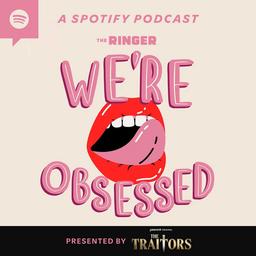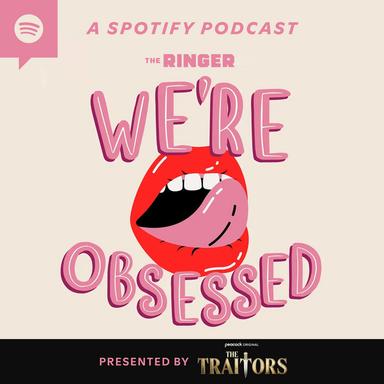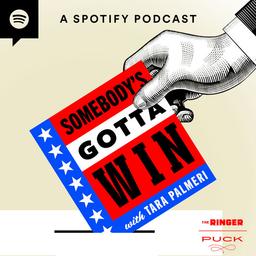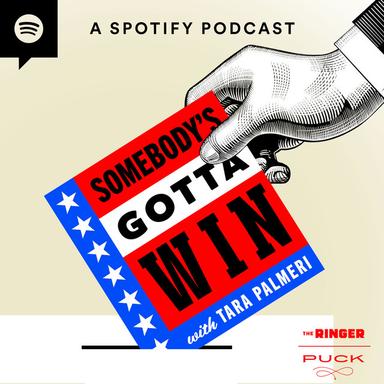Did you notice that TikTok stopped working on Saturday night? Did you notice that it started working again less than 24 hours later? Have you been hearing about “the TikTok ban” for what feels like 237 years? Have you tried following news stories about the ban, only to have your understanding top out at “um, China, apparently”? Would you like some help making sense of the whole mess so that you can get back to watching bite-size videos of a baby talking in a Scottish accent ASAP?
Friend, that makes two of us. Three, if we include the baby.
Let’s sort this thing out together … Q&A style.
So, like … what exactly happened on Saturday?
At around 10:30 p.m. Eastern time, TikTok, which boasts 170 million users in the United States, including my mom, disappeared from app stores in the U.S. At around the same time, visitors to the app and its associated website were greeted by a message reading, “Sorry, TikTok isn’t available right now.”
Did the message say why TikTok wasn’t available?
It did! “A law banning TikTok has been enacted in the U.S.,” it said. “Unfortunately, this means you can’t use TikTok for now.”
So TikTok was legally banned in the U.S.?
It’s not quite that simple, and we’ll get into the details in a second, but essentially, yes. The ban had been in the works for a long time, which is why you probably feel like you’ve been hearing background noise about it since before TikTok was even invented. After years of discussion and failed attempts at regulation, the bill containing the ban passed both houses of Congress last spring with broad bipartisan support. It was signed into law by President Joe Biden in April, and it was unanimously upheld by the Supreme Court in TikTok Inc. v. Garland just last week.
Can you provide the most boring imaginable summary of this law, just to get all the essential facts on the table?
Oh, I’d be glad to. Strap yourself in, because this is going to get so boring so fast. (It’ll be quick.)
TikTok is owned by a company called ByteDance. ByteDance, as you may have heard, is Chinese. Presumably, the name “ByteDance” sounds less embarrassing in Mandarin. I hope so. Oh, God, how I hope so. ByteDance’s ownership structure is complex, and most of its financial backing comes from outside China, but the Chinese Communist Party exercises enough control over the company’s operations to have raised a lot of not-unfounded worries about surveillance and data privacy. What if China’s state security apparatus can see how much you love watching a viral dance called the Wet Alex? What if it can also see your fingerprints?
TikTok has been banned to greater or lesser degrees by governments around the world. (The world’s most populous democracy, India, banned it outright in 2020, saying that TikTok and a host of other Chinese-created apps were “prejudicial to the sovereignty and integrity of India, defence of India, security of state, and public order.”) It’s been targeted by U.S. lawmakers since at least 2019, when the first Donald Trump administration called for a national security investigation into the platform.
During his first term in office, President Trump repeatedly attacked the app on social media and at rallies. He became the loudest voice pushing for a ban. In 2020, he even tried to use the emergency economic powers vested in the presidency to shut it down via an executive order. Multiple federal courts blocked the order, citing executive overreach, and ever since then, China hawks in Congress have been trying to get the app banned via legislative action.
Cool, so is that the end of the boring summary?
Not quite—this is the actual “law” part. Fast-forward to April 2024, when the U.S. House of Representatives passed Public Law 118-50, a wide-ranging appropriations package with provisions including $95.3 billion in foreign aid, new penalties aimed at fentanyl traffickers, and sanctions against Russia and Iran. Nested inside this bill was a separate bill, memorably called the Protecting Americans From Foreign Adversary Controlled Applications Act. This law gave ByteDance a deadline—initially 180 days, later extended to 270 days—to sell or otherwise relinquish control of TikTok.
If ByteDance failed to comply, TikTok itself would not be directly punished, but the companies it relies on for distribution would be massively fined unless they dropped the platform. Those companies include Akamai and Oracle, which provide web hosting for TikTok’s content, as well as the little-known tech startups Apple and Google, whose stores allow new users to download the app.
This law meant that hosting companies could face fines of up to $5,000 for every user who looked at TikTok. Those fines could quickly mount into the billions, because if there is one inescapable takeaway from this story, it’s that a lot of people want to watch a 30-second video of a guy on a child’s tricycle trying to jump over some paint cans.
So TikTok went dark on Saturday because these service providers kicked it off?
I guess? Kind of? ByteDance didn’t divest itself of TikTok, and the ban was scheduled to kick in on Sunday, just a couple of hours after the app went dark. Google and Apple definitely took TikTok down from their app stores. What happened with Oracle and Akamai is slightly less clear. Content from TikTok was still being delivered to users, even if that content was limited to a message explaining why the app was unavailable. Whether that message was hosted by Oracle or Akamai, and whether hosting the message itself might have violated the terms of the ban, I’m not sure. The possibilities would seem to be that (a) Oracle and Akamai did indeed force TikTok to shut down (and either didn’t host the message or didn’t view it as a potential violation) or (b) Oracle and Akamai didn’t shut TikTok down, in which case it would seem likely that TikTok shut itself down for theatrical effect. The details remain a little murky here.
Either way, TikTok was back online for existing users less than a day after it went dark. (It still hasn’t returned to app stores as of Tuesday morning.)
How did creators, users, and rival tech companies cope with the ban?
Creators—people whose livelihoods depend on TikTok—generally freaked out, though many of them had been preparing for a ban for years. There were tearful goodbye messages followed by tearful hello messages a few hours later. There were migrations to new apps (more on this in a second). Users mourned the loss of an app that helped unite communities. One of them started a fire outside the office of Representative Glenn Grothman, a Republican congressman from Wisconsin who supported the ban. Instagram announced a new video-editing app called Edits, which is somehow an even more embarrassing name than ByteDance.
But the message from TikTok said I couldn’t use the app for now. And the app is already working again! Does that mean the ban was temporary?
According to the letter of the law, no. But TikTok had reason to believe the law would not be enforced as written and thus framed its messaging as though the ban wouldn’t be in effect for long.
OK. What reason was that?
Donald Trump.
But wait, wasn’t Trump the loudest voice pushing for a TikTok ban in the first place?
Yes.
Didn’t you just say that Trump tried to ban TikTok unilaterally in 2020 and was stopped only by federal courts?
Oh yes.
So why would TikTok see Trump as a way out of the ban?
Because he’s now super pro-TikTok. Trump, the 47th president of the United States, is very much at war on this issue with Trump, the 45th president of the United States.
The message TikTok posted when it went dark explicitly and gratefully stated that Trump wanted to keep the service operating in the United States. TikTok executives, like many other tech executives, have been currying favor with Trump ever since the November election. TikTok’s CEO, Shou Chew, visited him at Mar-a-Lago last month, and Chew was also invited to sit on the dais at Trump’s inauguration, alongside Elon Musk, Mark Zuckerberg, and Jeff Bezos.
Wait, so the leader of TikTok was invited to occupy a place of honor at the presidential inauguration that took place one day after the company he runs was outlawed? Isn’t that weird?
It is extremely weird. There is really no getting around how absolutely weird it is. If Pablo Escobar’s hippos had been invited to live on the National Mall the day after major anti-cocaine legislation was enacted, it might have been weirder, but only a little weirder, and only because hippos were involved.
Anyway, on Sunday morning, Trump issued a full-throated statement of support for TikTok via Truth Social. In this statement, he vowed to issue an executive order extending the deadline for the ban—which, again, had already taken effect. He also floated the idea that the U.S. government could acquire a 50 percent stake in the service as a joint venture with “whichever purchase [sic] we so choose.” TikTok came back online shortly afterward. The first thing everyone saw after opening the app was an effusive message crediting the platform’s return to “President Trump's efforts.”
So wait, did TikTok stage its own shutdown just to make Trump look good?
It’s not an unreasonable inference! Despite the fact that the ban was sponsored by Republicans and supported by both parties, Americans generally hated it, which meant that “saving” the app could be an easy way to win some cheap approval points. It’s also worth noting that TikTok hadn’t necessarily been forced to shut down at all. The Biden administration had made it very clear that it planned to leave enforcement of the ban up to Trump.
Even if you assume that the shutdown was real, though—and that’s also a reasonable assumption, considering that Apple and Google et al. would be likely to err on the side of compliance rather than risk gargantuan penalties—it seems inarguable that TikTok stage-managed the narrative around its shutdown to portray Trump as its rescuer. And thus, I guess, to get further into his good books. Which is wild, considering that many of Trump’s own allies (including his pick for secretary of state, Marco Rubio) still vocally support the ban. It’s a mess!
Look, I just want to know whether TikTok is banned or not.
This is because you, an innocent, are still living in a world where words have meaning, where laws are operative until repealed, and where Truth Social posts cannot wipe away acts passed by Congress, signed by the president, and unanimously upheld by the Supreme Court. We no longer inhabit that world. In the world we do inhabit, there is no obvious yes or no answer to the question of TikTok’s legal status. The app exists in a state of radical uncertainty. It’s Schrödinger’s app. Inside the box, it is both dead and alive.
There is one loophole in the Protecting Americans From Foreign Adversary Controlled Applications Act—a terrible name, but still better than “Edits”—that might resolve the question, kind of. The act allows the president to extend the deadline for a TikTok sale by 90 days, if he can certify to Congress that divestiture is well underway. Heading into Monday, there was a lot of debate about whether Trump could somehow stretch this clause to justify delaying the ban. On Monday night, though, just hours after the inauguration, the White House issued an executive order that didn't even bother with that much legal cover. It simply ordered the attorney general not to enforce the ban for 75 days and to write letters assuring the companies in violation of the ban that they would not be punished for continuing to violate it. The legal status of this mandate, like that of the many executive orders signed by Trump on Monday, is, to put it mildly, unclear.
So why did Trump actually change his mind about the ban?
I think you have to read the change in light of Big Tech’s significant lurch to the right in the years since Musk’s acquisition of Twitter in 2022. For both cultural and economic reasons, the billionaires at the top of the Silicon Valley hierarchy have increasingly abandoned democratic values in favor of a worldview whereby a handful of elite actors, by virtue of their wealth and access to power, are entitled to direct events according to their own will. The name for this worldview is “oligarchy.” You’re going to hear that word a lot in the coming years.
One of the goals of the oligarchic program—which is less a consistent system of thought than a kind of petty improvisation, but it has some fixed objectives—is the destruction of the information environment. “Information environment” is another term you’ll hear repeated often during the second Trump administration. It refers to all the ways by which you figure out what’s going on in the world around you—the news media, your social networks, search engines, etc. Democracy depends on a reasonably healthy information environment because citizens making decisions together need an accurate picture of the world to base those decisions on. By the same token, a corrupted or broken information environment makes populations easy to manipulate, makes factions easy to divide, and makes the hand of authority stronger since power becomes more persuasive where there is less independent access to fact.
So TikTok could be used for propaganda? Is that the idea?
Not exactly. This is not so much about making people believe that propaganda is real so much as it’s about creating a permanent state of low-level uncertainty. It’s not necessary to convince everyone that fluoride causes bird flu (or whatever). It’s necessary only to sow enough doubt that all narratives, including the accurate ones, become suspect. If you find yourself saying, “I don’t believe the anti-vaxxers, but I don’t trust scientists either, and anyway, would there be this much noise about vaccines if there weren’t something to it?” then you have fallen into exactly the trap the people peddling the anti-vax narrative have set for you. You think you’ve achieved some sort of heroic skepticism. Actually, you’ve taken the first step toward letting your feelings determine what you believe.
This is why, for instance, the ramrodding of generative AI into search engines, which has been disastrous from a product standpoint—it’s made Google less accurate, less useful, and less trustworthy—has still served the ends of the tech oligarchy. If Google is your means of ascertaining reality, and Google leaves you dubious and uncertain, then you are a less functional citizen, a meaningfully less free citizen, than you were before. And making you less functional and less free has to be understood as the increasingly conscious agenda of everyone on the dais with Chew at the inauguration.
Trump, in his second term, has arguably set himself up less as the authoritarian ruler many of his critics imagine and more as a transactional figurehead willing, for a price, to use the powers of the presidency to facilitate the transition to oligarchy. (This distinction, admittedly, may not matter that much.) If TikTok can be placed in the hands of a Trump-friendly entity, or even simply be held hostage by the threat of a Trump-enforced ban, then every major social media service in the United States will be under the control of oligarchic interests. A little tweak to the algorithm here, a subtle shift there, and enough misinformation flows to enough new places to damage the information environment—and if you look at Musk’s X as a model, the tweaks have not been little or subtle at all.
It’s no coincidence that Musk has started attacking Wikipedia, that Bezos has nerfed The Washington Post, and that billionaires en masse have turned against higher education all at once. The less informed you are, the less educated you are, the less literate you are, the more it serves their interests. The TikTok algorithm is a big lever in the misinformation machine. Of course they can’t wait to pull it.
OK, but, like … should TikTok be banned?
One of the funny things about the run-up to the ban, during the whole “Goodbye to my Chinese spy” craze, was how blasé users were about the idea that China was harvesting their private data. So many Americans signed up for Xiaohongshu, a Chinese-language vertical-video app known in English as RedNote, that it went to the top of Apple’s app store rankings despite being an even more likely vector for Chinese surveillance than TikTok was. The general attitude seemed to be that, well, since we all know American tech companies are spying on everything we do, what difference does it make if China joins in? This is a defeatist attitude, I guess, but it’s ultimately on the side of life. Maybe we can’t stop Big Tech from wiretapping our brains, but TikTok is giving us so much—so much art, culture, news, community, and insight into one another; so much happy chaos—that the good outweighs the harm.
I think this is broadly true, though I suspect that most of the people adopting this attitude have a naive view of China’s government. I also used to think it was true that the good outweighed the harm where Twitter was concerned. Two years into Musk’s reign, I no longer think so. Which I guess is just to say that, yes, Chinese data surveillance is a legitimate national security concern, but it’s not the one I worry the most about, and it pales in comparison to the threats closer to home.




